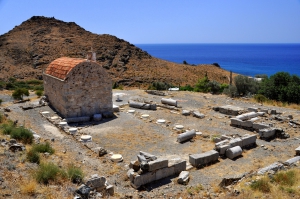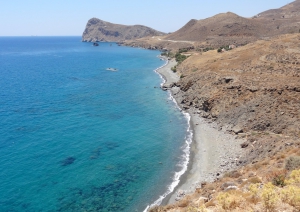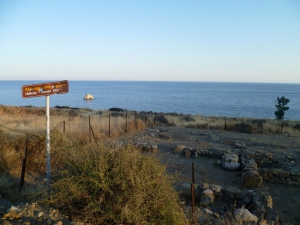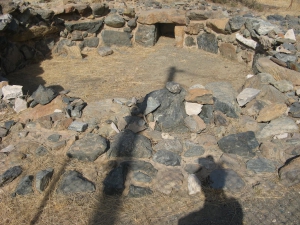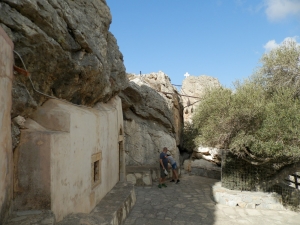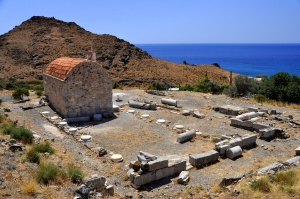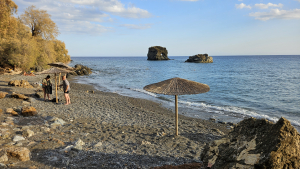Lendas is built on the site of the ancient city Levina, 74km south of Heraklion, on the southern slopes of the imposing Asterousia Mountains. The name of Levina is believed to come from the Phoenician “Lavi” which means Lion. Indeed, on the west of the village there is a cape reminding of a lion's head from far.
The very quiet beach of East Tsigounas, mostly known as Petrakis, is located 1km east of Lendas and 76km south of Heraklion. it is located on the foots of the steep and inhospitable slopes of Asterousia Mountains.
At this site, in 1981, a large building of the Roman period was found that probably operated as a mansion.
At Gerokambos (Sacred Place) west of Lendas in 1959 three vaulted tombs were found, with the largest (diameter 5.10m) looted and empty. In front of the entrance, a hall was full of people and animal bones, charcoal and cups. In a second tomb figurines, daggers, vases, seals and beads were found.
The cave church of Panagia at Vithanos is located in a panoramic position of the Loutra Gorge, near the village of Krotos. It is dedicated to Zoodochos Pigi (Life Giving Spring) and one can still see the date 20-5-1765 above the entrance.
Lendas is a remote seaside settlement located in the imposing Asterousia Mountains, 74km south of Heraklion. The settlement is built on the site of the ancient city of Levena, which flourished in the Greco-Roman years, as the seaport of Gortyn, which was then the most important city of Crete.
The small beach of the Elephant (Elefantas) is located between Cape Psamidomouri and the beach Petrakis in Lendas and directly below the Levinthos hotel, through which there is access.
- 1
- 2












